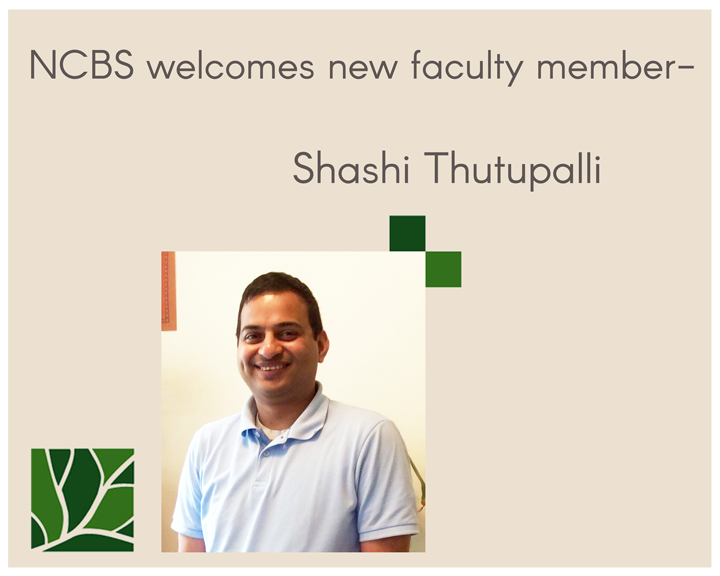The campus extends a warm welcome to Shashi Thutupalli, the newest faculty member joining NCBS. He will be affiliated with the Theory and Modelling group, and with the Simons Centre at NCBS. During his PhD, Shashi worked on studying pattern formation in Min proteins that influence division in bacteria. He also devised a microfluidic system to study the function of the protein synaptotagmin-1 in membrane fusion; particularly, the protein's role in actively pulling presynaptic vesicles to the presynaptic membrane in axons. Shashi's PhD work further involved the discovery of several new and interesting effects in the complex active emulsions he designed, including locomotion of droplets in which chemical oscillations take place, novel coupling modes between oscillators, cross-over phenomena in single-file transport and lateral layering effects in swarming behaviour. During his postdoctoral research, Shashi focussed on understanding collective behaviour in biological and biomimetic matter. His work on the dynamics of the feeding patterns of the worm C. elegans, led to the exciting revelation that these nematode worms also farm bacteria. Overall, Shashi's research on the complexity and collective behaviour of living systems is based on an incredibly interdisciplinary approach that blends concepts from biology, physics and engineering.
At NCBS, Shashi will begin exploring the mechanics and informational aspects of various biological and complex systems. The specific subjects of interest range from microbial and animal populations, amenable to laboratory scale experimentation, to physico-chemical systems such as mechanical oscillators and biomimetic soft active matter. One particular focus will be the physico-chemical basis of organelle biogenesis and intracellular trafficking pathways. Towards this, he will work on creating in-vitro systems related to the physical principles underlying non-equilibrium compartmentalisation and the fundamental issue of whether the Golgi system is constructed from a pre-existing template or generated through self-organisation.










0 Comments